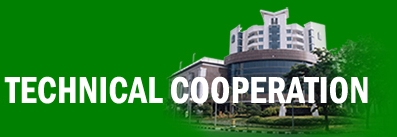|
Preface
Information and
communication technology (ICT) has become an indispensable tool in the
fight against world poverty. ICT provides developing nations with an
unprecedented opportunity to meet vital development goals such as
poverty reduction, basic healthcare and education far more effectively
than before. Those nations that succeed in harnessing the potential of
ICT can look forward to greatly expanded economic growth, dramatically
improved human welfare and stronger forms of democratic government.
Some
direct and indirect advantages of ICT:
-
Improves information access.
-
Improves educational and health program.
-
Extend geographical reach.
-
Increased competition.
-
Investment growth.
-
New trade opportunities.
-
Lower prices.
-
Facilities market entry, especially for
SMEs.
-
New sources of revenue.
ICT
appears to be an essential component of development initiatives and can
act as a powerful overall enable of development. If every country
approach the ICT sector with the same kind of urgency and application as
the commercial sector, then they will have every chance of building a
strong world, new wired future that not only includes the world’s poor
but gives them an unprecedented opportunity to lift themselves out of
poverty.
The
scale of the ICT challenge is immense. Despite the forces of market
liberalization and globalization and efforts at public policy reform,
the goal of achieving universal access to ICT and global information
infrastructure has remained elusive, and the disparity in access to ICT
is growing.
A
unique willingness should be exists among all partners – promoted by
the government – and stake-holders, including companies, foundations,
non-government organization (NGOs) and multilateral organization to work
together to eradicate digital inequity among all segment of community,
in particularly rich and poor people.
A
strong ICT plan must be developed the entire world to reduce the ICT
disparity. The e-readiness condition in every country is different. The
major problem of developed world is related to privacy, Intellectual
Property Rights (IPR), security etc. However, the primary concern of
developing world are pricing, regulation, content, know-how and
awareness. Every country has to make self-assessment in order they can
develop the right ICT plan. A comprehensive self-assessment tool can
figure out the e-readiness condition.
ICT
development plan must start with knowing what assets and capabilities do
the country have and what must be done to leverage these advantages. The
plan also should identify what must be acquired in order to improve
level of e-readiness. Therefore a framework for analyzing and
determining a level of e-readiness is a basic before drawing up a plan
for ICT.
|

